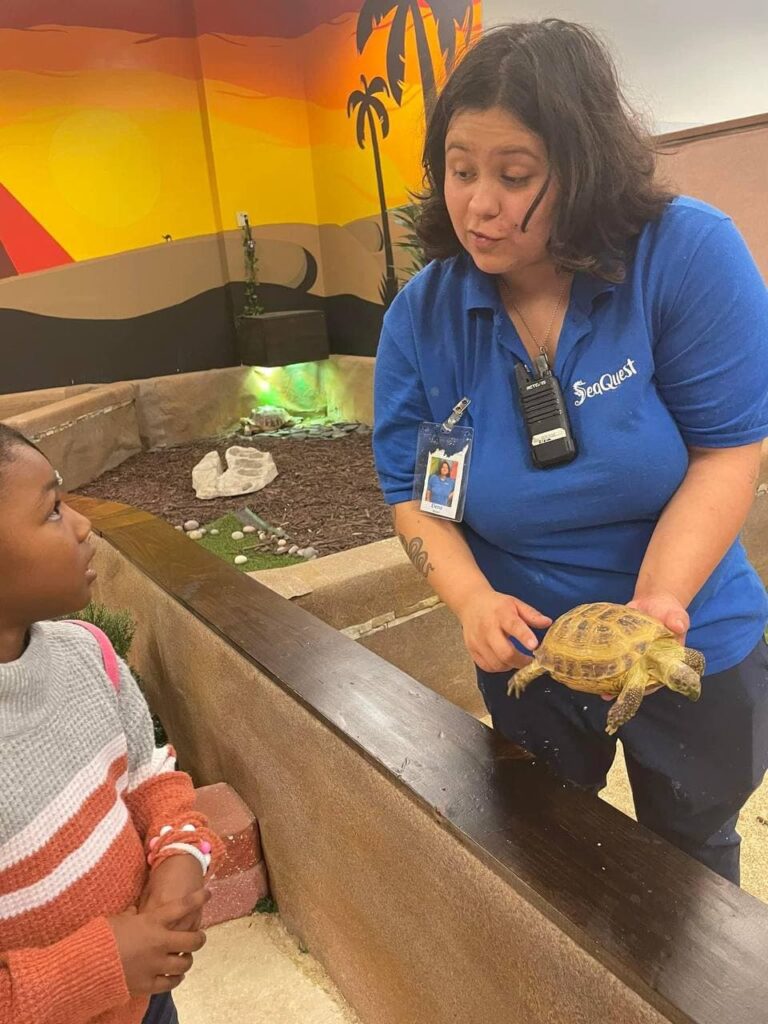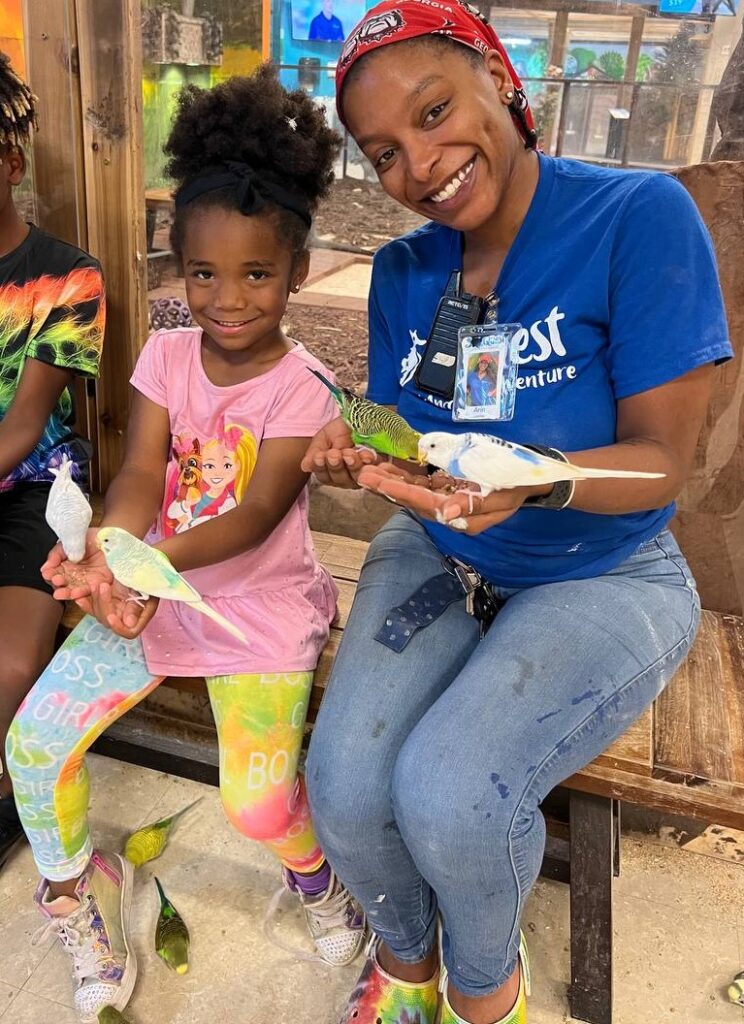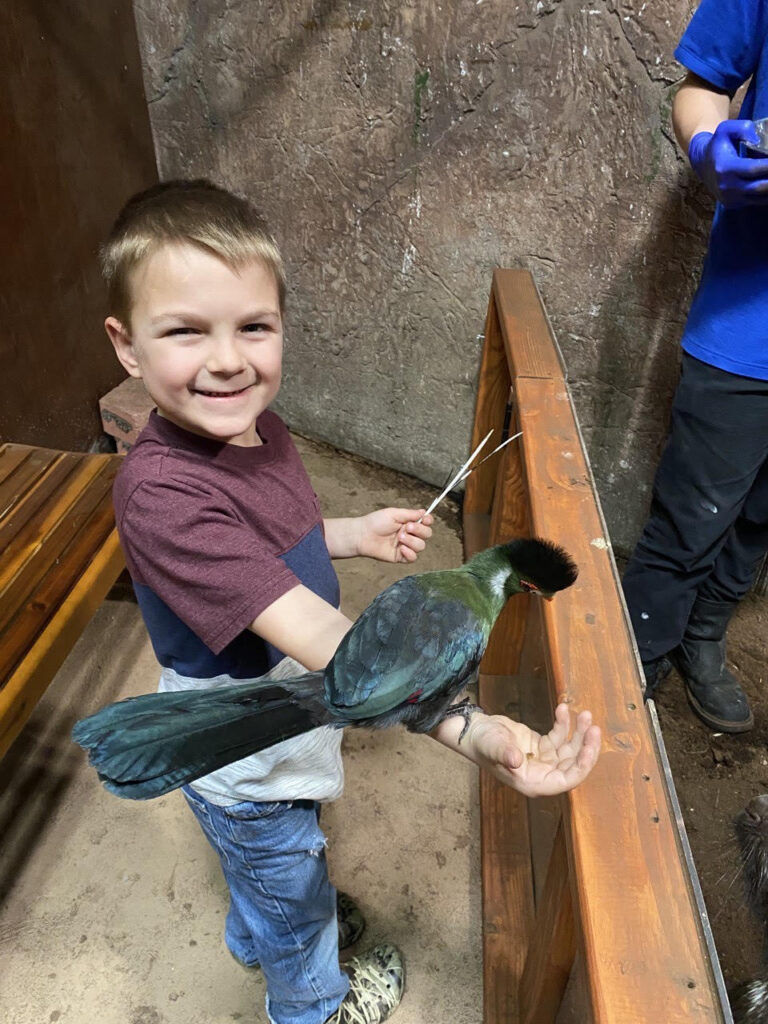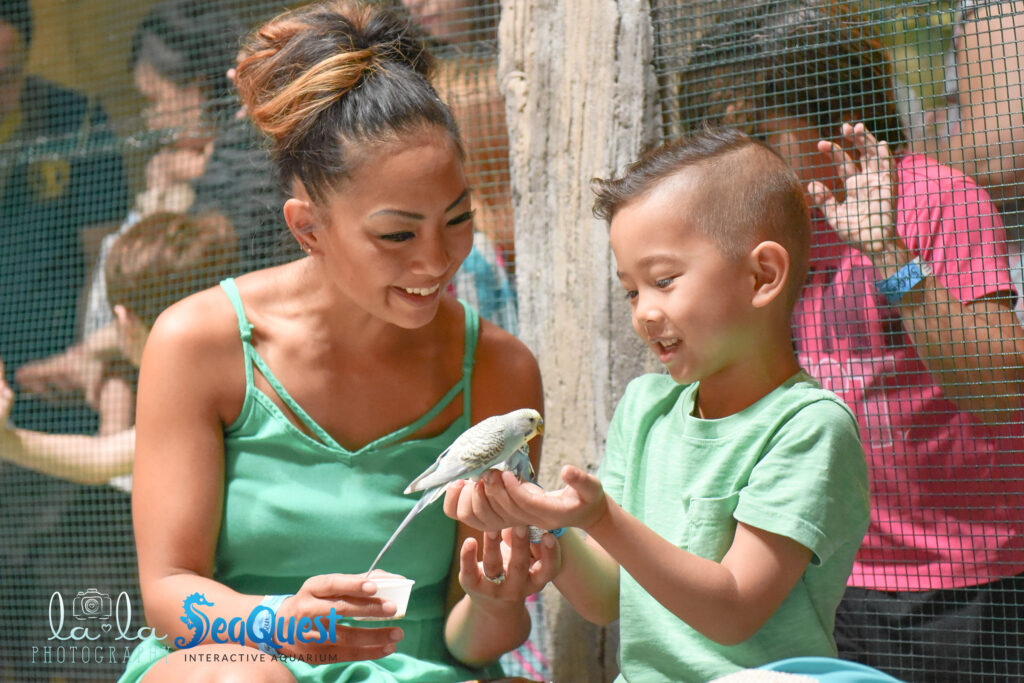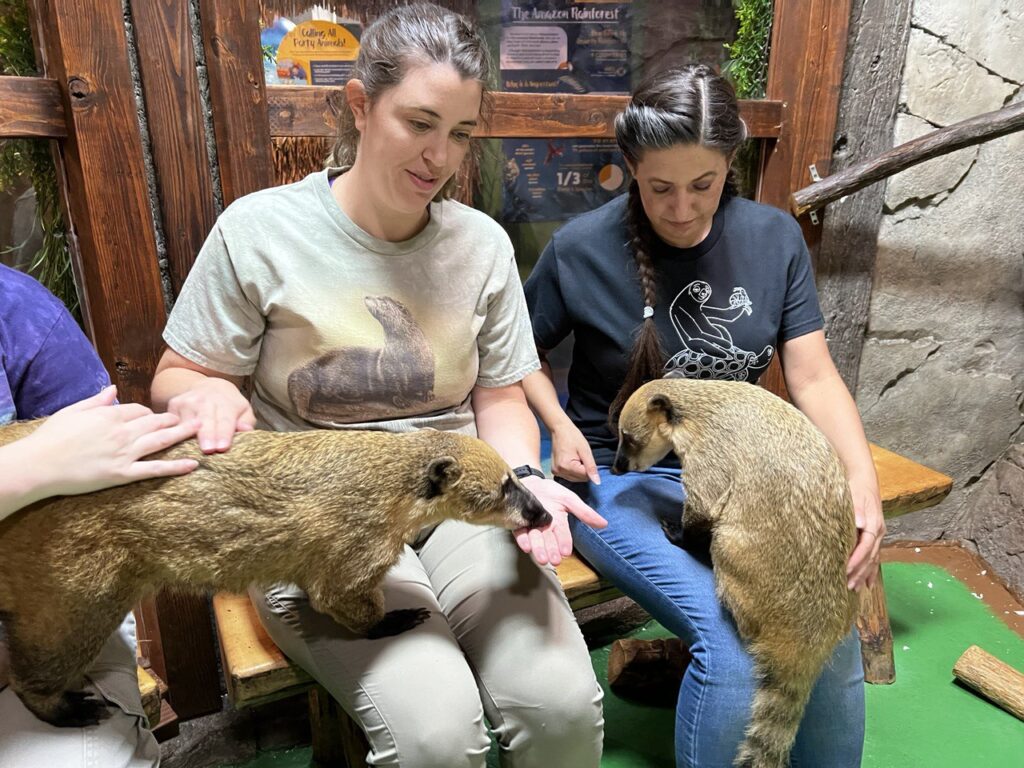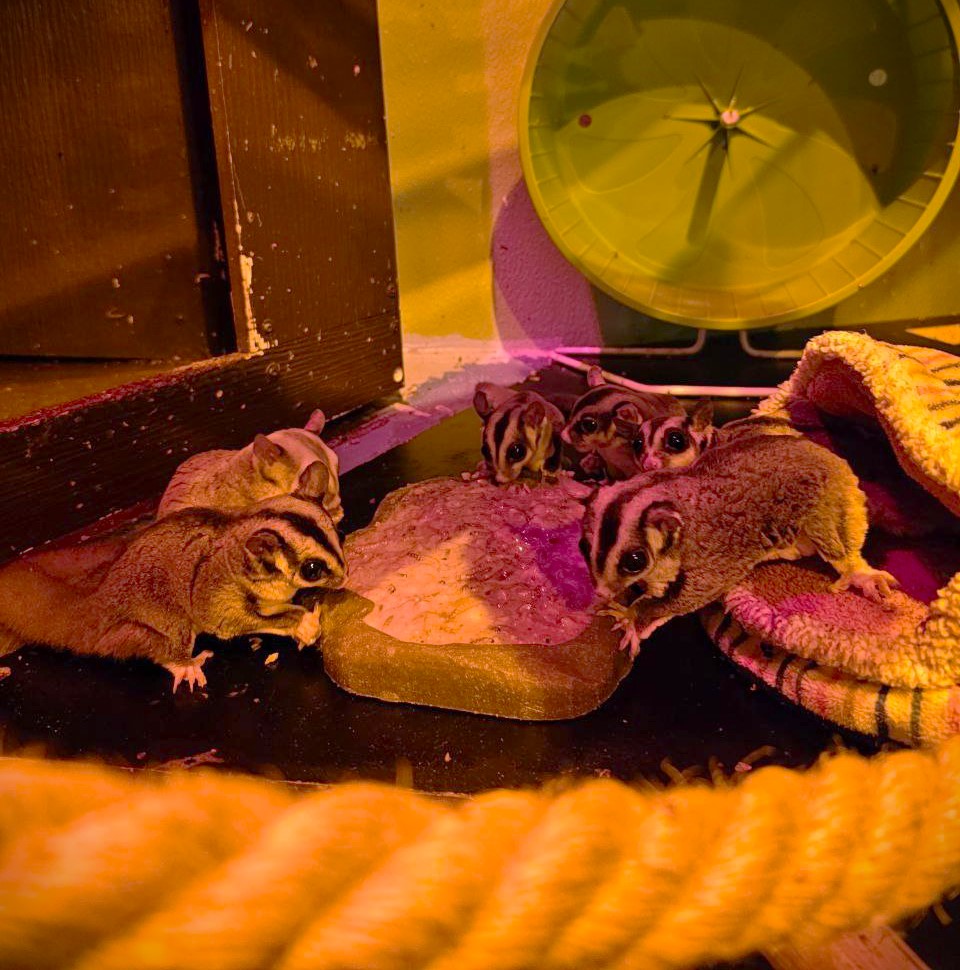Child Safety in Animal Interactions at SeaQuest: How We Ensure Safety and Encourage Curiosity
Share it on:
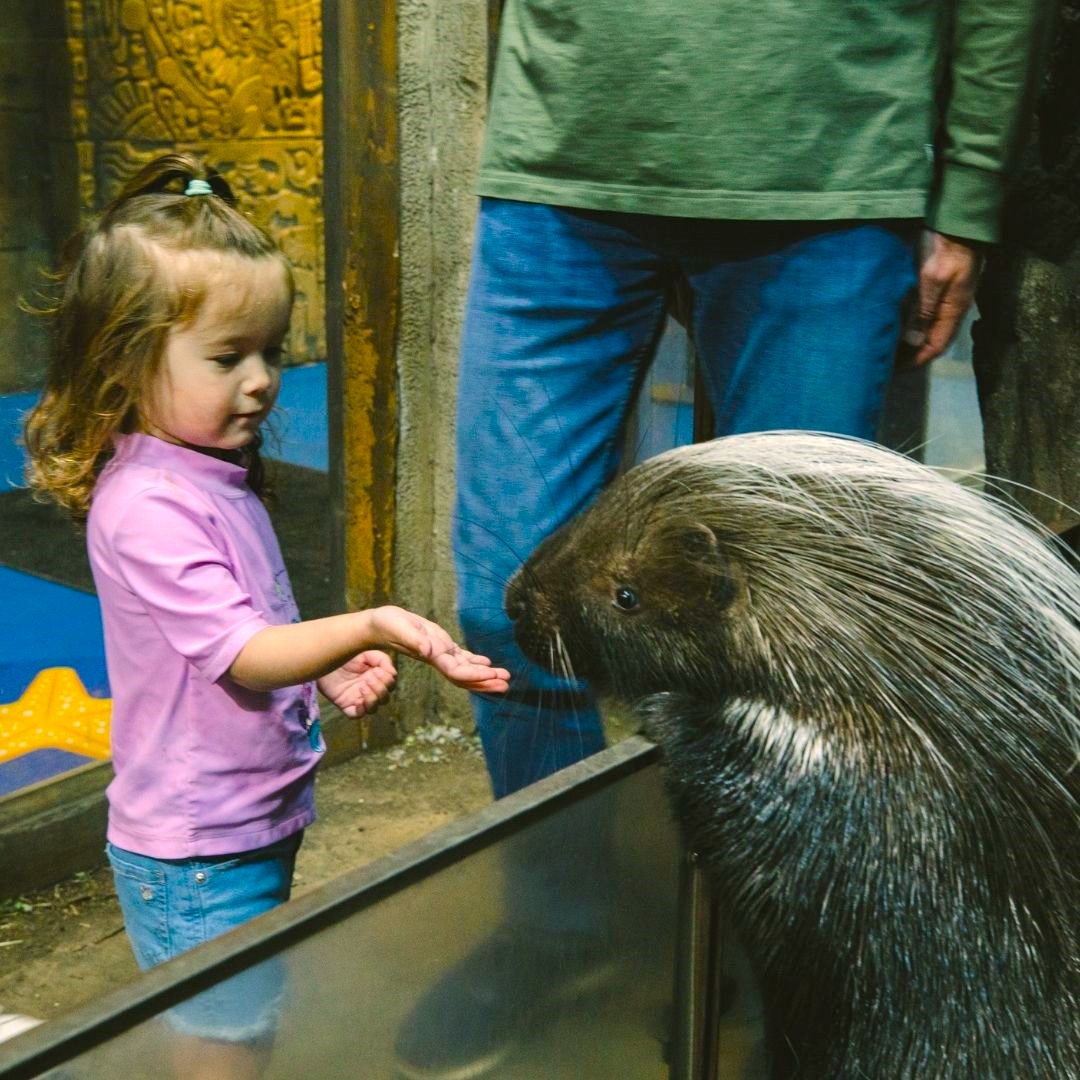
Here at SeaQuest, we pride ourselves on satiating the curiosity of all our guests, especially children who visit. Kids of all ages can gain an immense understanding and appreciation for animals from a short visit at SeaQuest. However, any cautious parent can be reluctant to let their kids roam wild, even in the safest environment.
In this article, we’ll cover how parents can feel safe knowing their children can explore the wonders of nature and the animal kingdom.
Comprehensive Safety Protocols
Before education, SeaQuest prioritizes safety above all else. Without it, guests can’t pursue their thirst for knowledge about nature and animals. In all exhibits, SeaQuest uses barrier systems so that kids and other guests can’t accidentally fall in, hurt themselves, or hurt the animals accidentally.
We also have a limited capacity for each exhibit, only allowing a certain number of guests to visit simultaneously to avoid emergencies and facilitate a safe environment for everyone involved.
These standards, along with other measures, are continually maintained and monitored. A safety protocol team checks safety protocols every month to make sure all staff members support these safety standards and alert others of any risks if they do exist. During this assessment, safety team members will address the issue immediately. If the issue persists, they will bring it forth to upper management to address the root of the problem. In addition, the team will host bi-weekly safety meetings to keep the entire SeaQuest staff updated on keeping the facility safe, especially for kids.
Designing Safe Interaction Zones
One safety measure SeaQuest continually evaluates is interaction zones. These zones are great places for kids to interact with their favorite animals or even animals they may be familiar with. However, each interaction zone provides plenty of physical barriers and signs instructing guests on how close or far away they should be from the enclosure. These signs allow guests and kids to enjoy their experience in a safe environment.
Safety Gear and Equipment for Children
Sometimes, personal protective equipment is necessary. If kids have allergies, especially to pet dander, SeaQuest can accommodate them by offering plastic gloves, masks, or hand-washing stations.
SeaQuest also offers properly fitting non-slip shoes or slippers for kids who may risk falling down or in an enclosure. SeaQuest staff will promptly sanitize all equipment before and after use to prevent the spread of germs between animals and guests.
Staff-to-Guest Ratios for Personalized Attention
Daily, the safety team will evaluate the ratio of staff members to guests for each animal interaction. This may eventually mean that pairs of guests only visit each animal at a time. Although this may be tedious at the time, it ensures that everyone involved stays safe and has a personalized experience they can cherish forever.
These ratios also vary depending on the animal and the age group of kids visiting. For example, only two 8-year-old guests could feed a shark with one staff member present.
Rules and Guidelines for Safe Interactions
Safety team members will also ensure that all staff members educate and instruct all guests on safely interacting with the SeaQuest animals. This includes the following:
- Keeping a safe distance between you and other animals;
- Respecting boundaries with animals;
- Behaving respectfully with each animal;
- Listening to SeaQuest staff members at all times.
These instructions will be given during a briefing before every interaction. Still, a staff member will accompany every family during an animal interaction to prevent emergencies and maintain comfort for guests and the animals.
Staff Training and Expertise
Not just anyone is qualified to maintain SeaQuest’s safety and fun. We hire our staff through a strict vetting process. All candidates must show a passion for animal well-being and conservation, have relevant experience in animal handling or care, and be willing to learn continuously. Our leadership team is required to have a degree in Marine Biology, Zoology, or Veterinary Sciences.
Once hired, staff will undergo rigorous training and continue certification classes periodically throughout their career that include the following subjects:
Staff Certification and Training Programs
We train all staff members and require certification in the following programs:
- Exhibit maintenance: Proper cleaning and maintenance of animal habitats that promote mental and physical well-being for animals.
- Guest education and interactions: Staff members learn how to engage with and educate guests, no matter their age or education. They learn about crucial child psychological development stages and how animal interactions assist in this development.
- Conservation Education: Education on environmental conservation surrounding wildlife, their threats, and how SeaQuest assists conservation efforts.
Specific team members will also be required to earn further certification based on their specialty. For example, marine team members will complete an Aquatic Life Support Systems (ALSS) certification, and our Wildlife team members will complete a Sloth Care Certification.
In addition to this training, staff members learn how to respond to the needs around them — from the animals they care for to the guests they assist to the kids who visit and may not know how to communicate their wishes. Staff members should be the connection between fun and safety for everyone.
Expert-Led Animal Handling Techniques
We teach staff members not only how to care for the animals at SeaQuest but how to gauge their well-being through body language and other signs. The more in-tuned staff members are to the needs and wishes of the animals, the more capable they will be at adjusting interactions with guests before an emergency occurs. Staff members also know how to educate guests on this protocol — no child wants to be disappointed by not being able to see their favorite animal at SeaQuest promptly. Still, all staff members know how to de-escalate and keep everyone happy.
Staff members also keep the animals happy by gradually acclimating them to human interactions. No animal is forced into an interaction if they don’t want to prevent discomfort or stress.
Emergency Response
From their initial training to bi-weekly meetings, staff members learn about the importance of safety at SeaQuest and how to maintain it in the following ways:
- Preventing and responding to unpredictable animal behavior;
- Directing guests in medical emergencies and evacuations;
- Appropriately reacting and directing others in natural disasters.
Staff members learn about these responses through scenario-based drills — in which staff members’ actions become muscle memory that will become necessary in real emergencies. Through preventative measures and regular safety updates, emergencies will never happen, but staff members will be ready if they do happen.
Guest Education and Preparation
To provide a safe and educational environment for kids to participate in animal interactions, we find ways to educate our guests about the experience as much as possible beforehand. We understand that everyone learns best in different ways, though. Some better understand the material by reading, while others would rather have hands-on experience or listen to instructions. Kids especially have a diverse range of learning styles.
You can always visit SeaQuest’s blog to learn what you can do to prepare your child for their time at SeaQuest. Otherwise, you can learn about our animal interactions through the brochures we provide guests during any visit.
Anyone who goes through an animal interaction will also have a briefing before the interaction. During this briefing, staff will educate guests and kids on what their behavior should look like in the interaction. They can do this by speaking about what to expect but also through role-playing scenarios where the staff will use a toy or a stuffed animal to take the place of the animal. These scenarios are practical with kids who often need hands-on experience to learn. Regardless of your education type, feel free to ask questions at any point. We want you to be as informed as possible.
Importance of Supervision During Interactions
Even though we educate all our guests — parents and kids alike — don’t expect to have a hands-off day when taking your children to SeaQuest. We ask all parents to monitor and supervise their kids at all times. Avoid distractions as much as possible, and make sure your child is within eyesight. We encourage supervision by alerting parents of unattended children and including parents as much as possible in animal interactions.
Animal Welfare and Comfort
An essential aspect of your safety at SeaQuest involves the comfort of our animals. For you to have a fun experience, the animals should get something out of it, too. Every exotic animal we care for has different needs to stay happy, and we aim to meet those needs daily. We provide regular animal health screenings, preventative veterinary care, and mental enrichment activities outside of human interactions.
We also cater a nutritious diet based on expert veterinary opinions and maintain their habitats daily to ensure they have plenty of room to exercise and rest. If we deem any animal not feeling up for interactions, we do not force the activity on them; instead, we focus on other ways to improve their time at SeaQuest.
Health and Welfare Checks for Animals
Every day, staff members and an internal team of veterinarians assess every animal on hand to evaluate their eligibility for interactions and overall well-being. These assessments include preventative health care measures, screenings for possible illnesses, and daily supplements that animals need to feel their best.
These assessments also differ based on the animal. Our veterinary team knows this and will provide the specific care that each animal requires. SeaQuest staff members also base their care given to animals based on the type of animal. For example, we feed some animals multiple times a day while we feed others on a more spaced schedule — it ultimately depends on the natural habits of each species.
Stress Reduction Strategies for Animals
We also ensure all animals stay comfortable through stress management techniques. One part of this includes providing mental enrichment activities in their environment where they can behave as they usually do in the wild. We also carefully scrutinize the number of guests that visit each animal and provide ample breaks for the animals throughout the day. Although we want you to have a fun time, the best way we can ensure your safety is to prioritize our animals’ happiness through these actions.
Ensuring Animal Habitats are Safe for Interaction
In each animal enclosure, SeaQuest mimics their natural environment as much as possible to provide mental enrichment. In addition, we complete regular cleaning routines for each enclosure with products that sanitize the area but aren’t toxic to the animals. This prevents the spread of illness for your children, you, and the animals.
Each facility also has safety features, including:
- Barriers that enclose animals and keep guests from entering;
- Clear escape routes for emergencies;
- Hand-washing stations for guests to use before and after interactions.
These features keep you safe and prevent any emergency from happening.
Emergency Response Measures
Although we do our best to prevent emergencies, we have protocols that all our staff is trained on to de-escalate various situations.
On-Site Medical Assistance and First Aid
We train all of our staff members in first aid, and our leadership team is closely tied with local emergency services to ensure swift action in the event of a medical emergency. Suppose a guest receives a minor injury during an animal interaction. In that case, staff members will quickly guide guests to a first aid station after safely enclosing the animal, alerting leadership of the situation. Once in the first-aid station, staff members will make sure guests are stable and safe before working closely with emergency personnel once they arrive.
Emergency Evacuation Procedures
Staff members practice emergency evacuation drills regularly to know where to go in any unforeseen situation and how to guide guests. In addition, staff members educate guests on these procedures and the correct exits to use during every animal interaction.
Communication Systems for Emergencies
Every staff member has a way to communicate with leadership staff and all other staff members they will utilize during the day, especially during emergencies. Walkie-talkies and other communication systems are common, and once alerted of an emergency, leadership teams will call emergency services on phones placed throughout the facility. All of these systems are in place to ensure a swift response. The better our staff members communicate, the faster we can handle emergencies.
How We Handle Guest Interactions With Animals at SeaQuest
At SeaQuest, you have the option to interact with a variety of animals, including:
Ultimately, guidelines for each interaction depend on the specific animal and the education involved. In general, all interactions share the following guidelines:
- Interacting with each animal gently and calmly;
- Following the guidance of SeaQuest staff members,
- Interacting with each animal for a limited time based on the discretion of the SeaQuest staff member;
- Limiting the number of guests per interaction to prevent stress;
- Interacting with an animal in a small timeframe to avoid stress.
Each interaction will also differ based on the animal’s habitat. For example, you can interact with some fish and stingrays through touch tanks or snorkeling, while you may get behind-the-scene tours for some of our mammals, reptiles, and birds. These interactions differ based on our discretion for your, your child’s, and the animal’s safety in mind.
Interactive Sessions with Aquatic Life and Touch Tanks
Aquatic life is often more sensitive than land-based mammals and reptiles, so we want to give them special consideration. Before using any touch tanks, staff members will instruct you to wash your hands before and after interacting with the aquatic life, use a gentle, two-finger touch that could harm you or the fish, and speak softly, as your voice will carry over the water and disturb the aquatic life.
You’ll also get to feed the animals and fish under close supervision for all aquatic life. You can also snorkel along with certain aquatic animals, such as stingrays. In these sessions, you and your children must be able to swim 100 yards and wear a life jacket at all times, as the water depth is five feet in the snorkeling portion. To keep your safety in mind, snorkel groups must not exceed six people at a time.
In addition, you’ll learn about the critical principles of aquatic conservation, including the growing threats of climate change, overfishing, and other human activities that harm various species.
Encounters with Exotic Birds
In encounters with exotic birds, you will need to follow these guidelines:
- Do not grab birds from above, as it often simulates predators’ actions;
- Scoop birds from below to provide a stable perch;
- Respect their space and do not chase after the birds to avoid stress;
- Only pet birds on their chests where they are most comfortable.
Often, we admire birds from below, but here, you can appreciate their wonder up close — something most people haven’t experienced in their entire lives.
Ongoing Commitment to Safety and Improvement
We do our best to ensure the safety of our guests and our animals, but we know that improvement is a constant journey. As such, we welcome feedback from everyone. To find ways to improve, we have regular safety and animal well-being audits from the following organizations:
- USDA (United States Department of Agriculture);
- Various states’ Departments of Fish and Wildlife;
- Animal and Plant Health Inspection Service;
- Utah Community Animal Response Program;
- Minnesota Board of Animal Health;
- New Jersey Animal Care & Control;
- The Virginia Department of Agriculture and Consumer Services.
These organizations hold us accountable by updating us on the latest safety protocols and technology and how to incorporate them into our routines. We also encourage guests and staff members to highlight growth opportunities, especially regarding safety.
Feedback Mechanisms for Guests and Staff
If you want to give us feedback at any point, please do! We have an open-door policy for all of our staff members to reach out to the leadership team, the Safety Protocol team, and our Human Resources department for any concerns or areas of improvement. As a guest, you can always give us feedback by contacting the respective location or speaking to our leadership team about your experience.
Implementing Safety Enhancements Based on Feedback
Once we receive the feedback, the leadership will evaluate it and present it during a bi-weekly meeting with the rest of the staff to normalize the procedure change. This may include everything from changes in animal care and cleaning procedures to guest interactions. Whatever it is, SeaQuest is more than happy to adapt.
Annual Safety and Welfare Reports
We consistently update our staff and guests about new animal and guest safety standards. You can check these out on SeaQuest’s website. Each report details any changes made and critical cornerstones of our safety protocols. We want to be as transparent as possible, especially regarding our guests’ safety and our animals’ well-being.
At the end of the day, we want you and your kids to go to SeaQuest knowing we care about your safety. With that in mind, you can focus more on building memories that will last a lifetime with your family and friends.
Use Code BLOG25 for 25% OFF Any Admission Ticket

